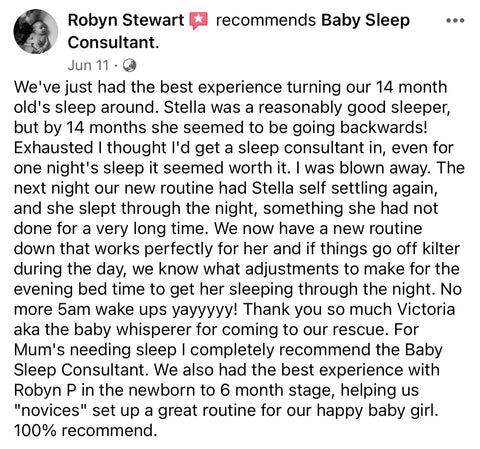
Calm, cortisol-inducing, and the stages in between: Understanding our baby’s stress responses
Calm, cortisol-inducing, and the stages in between: Understanding our baby’s stress responses
We all know (and have felt) that instant reaction when we hear our baby or child cry – there’s not much that tugs on the heartstrings more quickly.
You may also have come across the idea that your baby has different cries that mean different things.
However, whether you can tell your baby’s hungry cry from their tired cry, the fact remains that crying is a baby’s way of communicating.
Despite the pull on our heartstrings, our baby’s cries are not created equal – by which I mean, their cries are not always communicating despair. Nor do they always result in the release of cortisol, or signal the same level of stress reaction.
A look at stress responses
According to the science, stress responses fall into one of the following three categories:
- Positive: classified as brief and mild – to moderate. This could be things like vaccinations, starting school or daycare or possibly sleep training. It tends to be the upset that your child experiences around transitions but is experienced with the countering effects of a parent there to buffer it. Positive stress responses provide our children with the opportunity to observe, learn, and practice adaptive responses to an adverse situation.
- Tolerable: is still relatively short-term and might be the result of a natural disaster, a death in the family, or divorce. There’s no denying these situations cause stress, but a loving adult is present to buffer it and can help a child to learn to deal with the stress – in which case it can, ultimately, become a positive stress response.
- Toxic: is the type you really want to avoid. This is the result of child abuse, neglect, long-term maternal depression, or substance abuse by a parent. When this form of stress is chronic or long-term, it can damage a child’s brain development.
What I find interesting when researching stress responses, is that even a tolerable stress such as divorce or death can become a positive stress response when buffered by the love and responsiveness of a parent or caregiver.
Further to this point is that while child abuse is horrific and appalling, and in no way justifiable, science tells us it has to be chronic and long term to damage brain development.
Is it fair to then insinuate that a few nights of sleep training buffered by a loving adult, is in fact worse than prolonged physical and mental child abuse?

Cortisol’s the culprit
For our babies, and ourselves, the body’s reaction to stress is similar – it releases cortisol and adrenaline.
To some extent, these hormones serve a biological purpose, mobilising our energy while suppressing our immune system and all the other so-called ‘non-essential’ processes that our body doesn’t specifically need to get out of a stressful situation.
We all understand what adrenaline is about. However, cortisol has received a bit of a bad rap recently.
Cortisol can be measured in the saliva, since it is easily measurable it is often tied to explanations of the damage that toxic chronic stress can have on a child’s brain.
While cortisol does factor into it, not all heightened cortisol readings are problematic.
Cortisol levels rise and fall naturally over the course of the day – increasing by 300-400% in a pattern that is still entirely normal. It’s when we see cortisol levels a third again outside of this normal pattern that we can say that there is a stress response, and even then this stress response need to be both toxic (see above) and long term, to cause harm.

Crying without cortisol
While there’s no arguing that chronic cortisol elevation can be damaging, as I mentioned earlier, not all crying triggers the release of cortisol. In fact one interesting child development study measured cortisol levels of infants having their 2, 4, 6 and 15 month immunisations.
Although the babies cried loudly at each of their visits, after the first time, there was no longer a biological stress response; they knew what was coming and had learnt to cope. This is a positive stress response, the body isn't shutting down, it has learnt to cope.
This isn't neglect, its growth and development of a stress response.
In other words, they still got a bit of a fright, but they were alright.
Other studies have also found that crying may release tension and reduce the activity of the HPA axis and cortisol response. All of this is further evidence that not all forms of stress – and not all crying – is the same.
So what does this have to do with my baby’s sleep?
Firstly, cortisol comes into things because babies who sleep more have lower basal cortisol, meaning their brains are primed for the ultimate in healthy development. There’s no denying that the road to getting your baby to sleep well can seem stressful.
And it can be stressful, but the benefits are substantial.
Recognising that the current sleep situation in your household is not working, and making changes to improve it, can actually reduce a child’s long-term exposure to stress and cortisol; not to mention the numerous benefits that come from the whole family getting more good quality sleep.
Working with a trained sleep consultant ensures that the stress around changes to a child’s sleep routine are managed and minimised. The resulting stress is always buffered by a parent, either through the use of consistent ‘in room’ methods or frequent check ins as a child learns to settle, both of which we know lessen the biological stress response.
Our understanding of cortisol also points to the importance of consistency for lowering stress and making sure that it is only experienced in a very short-term way. Some of our clients have tried and failed with sleep training for several weeks, and with our guidance and experience we are able to solve their sleep drama in a few nights.
In the same way that we saw crying without cortisol in the latter experiences of a child’s vaccinations, there may still be tears on the subsequent night's of sleep training, but much less stress, if a child understands what’s happening.
While most mothers have an emotional response to hearing their baby cry, it can help to understand that some stress, when short-term, can actually result in a positive stress response.
Ultimately, our job as parents is not to always problem-solve or distract at sleep time. It’s not to remove their emotions and quieten them constantly with a breast or dummy.
It’s not even to stop the crying or force them to sleep.
Our vital role is to provide them with all the very best conditions they need to thrive and with opportunities to observe, learn and practice adaptive responses, to all situations, including stress and sleep.
In most families, sleep training with a sleep consultant is brief and successful, the results are a baby who has a new and important skill: the ability to sleep and settle independently.


 Book Online
Book Online






Thanks for such a great blog! I didn’t realize stress could be buffered by an adult.
Chloe on